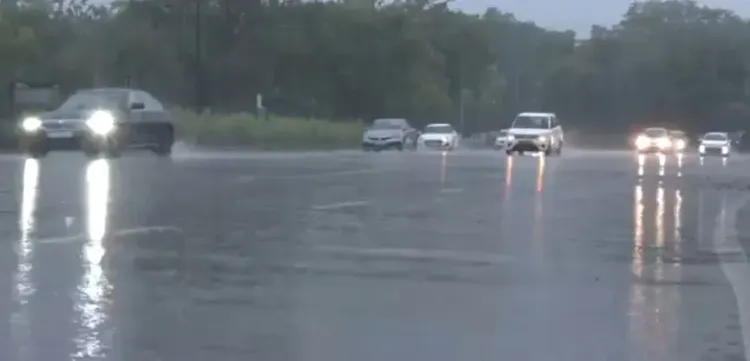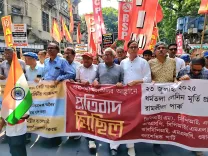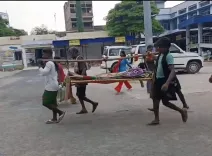Is Heavy Rainfall Disrupting Life in Delhi-NCR?

Synopsis
Key Takeaways
- Heavy rainfall causes significant disruptions in daily life.
- Traffic congestion is severe on major roads.
- Waterlogging impacts many residential areas.
- Authorities have issued alerts to warn residents.
- Commuters are encouraged to plan their travels accordingly.
New Delhi, July 23 (NationPress) Intense rainfall lashed various regions of Delhi-NCR on Wednesday morning, severely disrupting daily activities as commuters and students faced significant traffic delays and extensive waterlogging throughout the capital.
The torrential rain caused vehicles to move at a snail's pace and hindered normal travel across numerous parts of the city.
The India Meteorological Department (IMD) issued a red alert for the entire area, predicting moderate to heavy rainfall alongside thunderstorms and gusty winds reaching speeds of 30 to 40 km/h.
The NCR regions under the red alert included Noida, Ghaziabad, and Faridabad, in addition to Delhi.
In the national capital, areas such as Northwest and Southwest Delhi, along with neighboring regions of Haryana and Rajasthan, were placed under an orange alert, as the weather department anticipated light to moderate showers and strong winds in those locales.
Three major intersections leading to Indira Gandhi International (IGI) Airport, New Delhi Railway Station (NDLS), and ITO faced significant traffic congestion due to multiple traffic signals and slow-moving vehicles.
Despite the heavy downpour near IGI Airport, there were no reported disruptions to flight operations.
This rainfall followed a brief but intense rain spell on Tuesday, July 22, which had already resulted in substantial waterlogging in several key areas of Delhi, including Press Enclave Road, both carriageways of Anuvrat Marg near Qutub Minar Metro Station, and stretches along MB Road near Sainik Farms, Saket Metro Station, and Mathura Road near Ashram.
Commuters were among the most affected by this sudden downpour, with traffic grinding to a halt on major roads such as NH-8, Mehrauli-Gurgaon Road, ITO, and even sections of Lutyens' Delhi.
Numerous vehicles were seen stranded in long queues, while exasperated commuters took to social media to share images and express grievances about blocked roads, submerged footpaths, and knee-deep water in residential neighborhoods.
Significant delays were also reported on the Mehrauli-Badarpur and Delhi-Ghaziabad corridors, with travel times exceeding an hour on several stretches. Traffic movement from Nangloi to Najafgarh was heavily impacted, exacerbating the difficulties faced by local residents.







